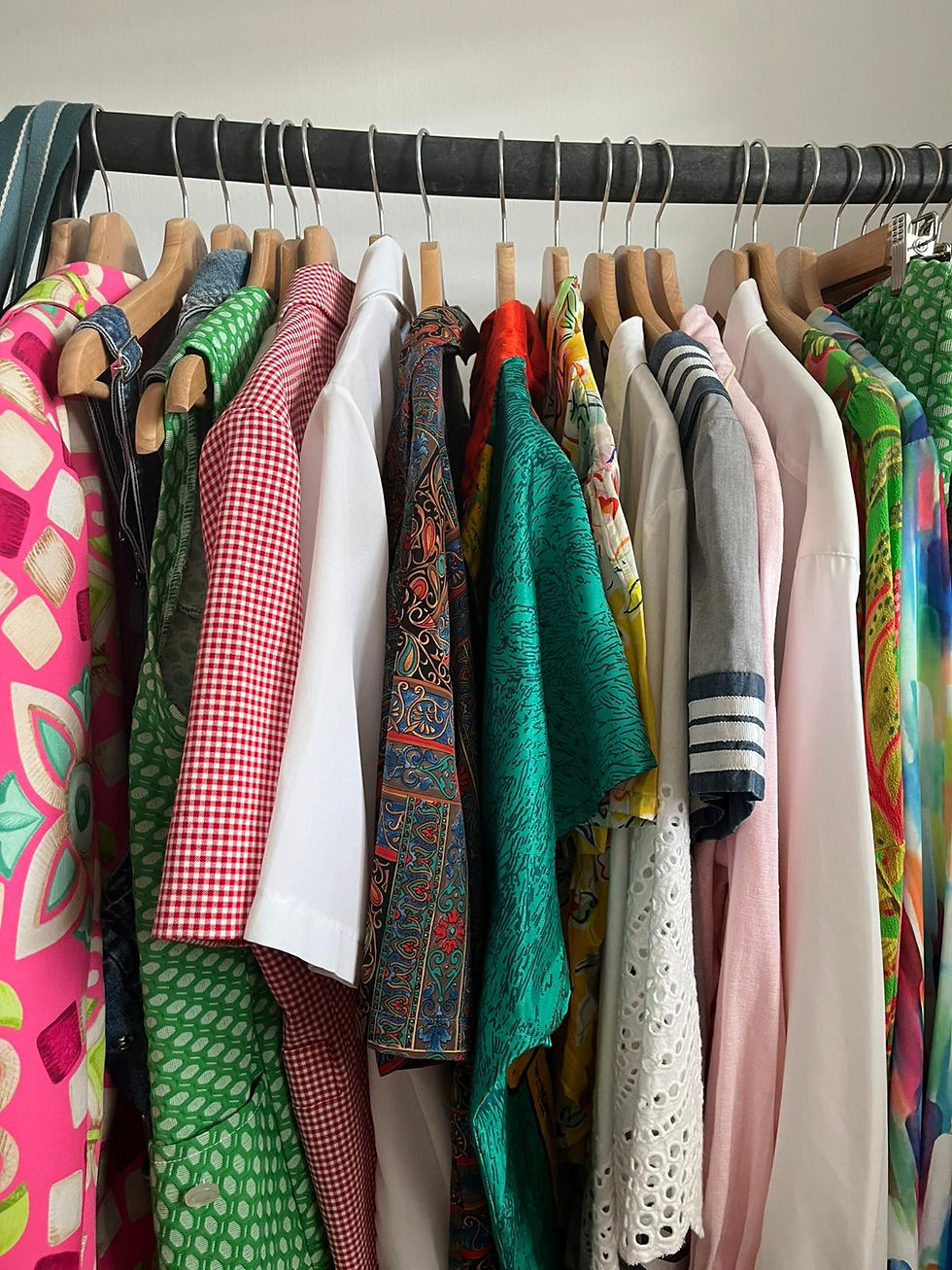The Need for Newness: The Fuel of Fast Fashion
- tamaralevy8
- Aug 6, 2023
- 3 min read
The average American buys 68 pieces of clothing a year, more than one a week, numbering to 52 a year. On a global scale, we consume 80 billion new pieces of clothing a year, a 400% increase compared to 20 years ago.
Even more alarming, is the clothing waste we produce each year, the average American now throws away 82 pounds of clothing.
Do we buy clothing to throw them away?
Why is what we wear becoming disposable?
The need to belong:
Clothing, historically, was made to last, it could be seen as an investment, an expression of oneself, that lately turned into a social norm to fit in.
Clothing and especially fast fashion presents an element of conformity. Brands follow trends dictated by high fashion, and reproduce them at a lower cost for the masses. These trends become the accepted norm of the season, and what people should wear to be seen as stylish, and in the know.
Fashion trends, therefore, offer a sense of belonging but also create a dependency and a feeling of urgency to get the next style.
Consumers are trapped in a loop to belong, exacerbated by social media, and the widespread influence of influencers to promote their newest garments.
The role of social media:
Shein is a champion at using influencers to promote their products, in exchange for a few items and some financial compensation, influencers brag about Shein products on social media, such as Tiktok and Instagram.
In 2022, 13.4K influencers promoted Shein products on TikTok, influencing millions to buy from the fast-fashion brand. The power of social media is to create a sense of belonging, amplified by fashion trends.
I own, therefore, I am, even if tomorrow it will be out of date. Compulsive buying to uphold a social status is leading us towards a throwaway culture, to show what we wear, as a means to be accepted in society.
Instant pleasure, a driving force:
Buying cheap leads to buying more- a T-shirt for $5, jeans for $15, and a dress for $20, how much have you spent? Not much, so buying for the same amount next week shouldn't be so much of a problem.
Are we buying clothing in the same way we are buying groceries, wearing, using, throwing?
Buying new clothing is a form of entertainment, providing instant pleasure to consumers. When we see a piece of clothing we want to buy, the pleasure center of the brain gets activated, and the cheaper the price we get, the more pleasure we get from the experience, shopping is in a sense a form of addiction.
Moreover, the feeling that our clothing magically appears in well-organized stores, or directly from our social media channels to our front door, makes us feel completely disconnected from our shopping experience, or the long journey the fabric had to go through to turn into that perfect-looking dress.

Influencers posing in their Shein dresses
We don’t have to think of where it came from, how it was made, or where it will go after we finish using it.

Shein garment workers in China
Ultimately, the newness wears out and the process repeats itself, endlessly. Unless, we take the necessary steps to break it. Once it fades away, only the poor quality of the item is left.
Buying better clothing less often will lead to spending less. Due to the high need for replacement, investing in clothing outlasting trends can be a solution to stop the chase for newness, protect our environment and its inhabitants.



Comments